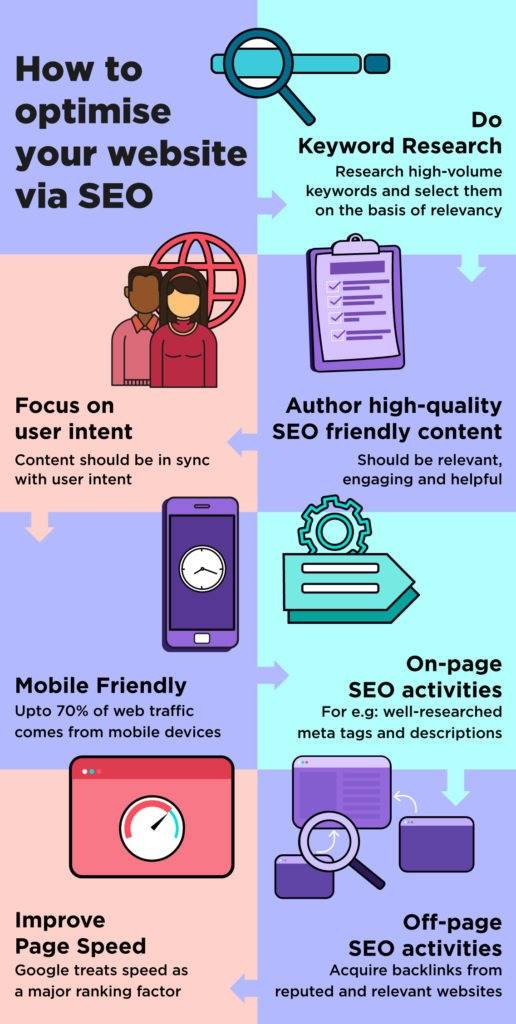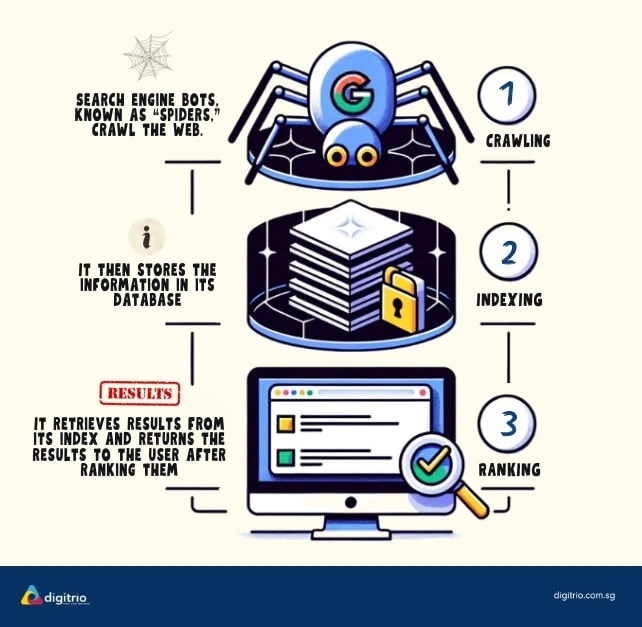Uncover the secrets of cloaking in SEO with our in-depth analysis that will change the way you approach optimization.

Image courtesy of via DALL-E 3
Table of Contents
Introduction to Cloaking in SEO
In the vast world of the internet, websites use various techniques to boost their visibility in search engine results. One such technique is cloaking, a method that can have significant impacts on a website’s search engine optimization (SEO) performance. Let’s delve into the basics of cloaking and why it holds importance in the realm of SEO.
What is SEO?
SEO, short for Search Engine Optimization, is like a magic wand for websites. It helps them perform better in search engine results, making it easier for people to find them. Websites that use good SEO practices can appear higher in search results, attracting more visitors.
What is Cloaking?
Cloaking is a sneaky trick that some websites employ. It involves showing different content to search engines than what regular users see. Essentially, cloaking presents one version of a webpage to search engines to improve rankings, while showing a different version to regular website visitors. This technique aims to manipulate search results in favor of the website, often at the expense of user experience.
Why Do People Use Cloaking?
In the world of SEO, some people use a sneaky technique called cloaking. But why do they do it?
Ranking Higher in Search Results
One reason people use cloaking is to trick search engines into thinking their website is more relevant than it really is. By showing different content to search engines than what users see, these websites can climb to the top of search results, even if they don’t deserve it.
Hiding Content
Another reason for cloaking is to hide things from users while showing them to search engines. This could be ads, spam, or other unwanted content that website owners want to sneak past unsuspecting users. It’s like playing a game of hide and seek, but with information on the internet.
How Do Search Engines Detect Cloaking?
In order to understand how search engines detect cloaking, we need to learn about web crawlers and the penalties websites face if caught using this deceptive practice.

Image courtesy of www.pghdigital.com via Google Images
Web Crawlers
Web crawlers, also known as bots or spiders, are like little assistants that search engines send out to browse websites and collect information. These crawlers check websites to see if they are being honest or if they are trying to trick search engines by showing different content than what users see.
When a web crawler visits a website, it takes note of the content displayed to users and compares it to what is shown to it as a robot. If the crawler finds discrepancies, it raises a red flag, and the website may be penalized.
Penalties for Cloaking
If a website is caught using cloaking to deceive search engines, there are serious consequences. Search engines like Google can lower the website’s ranking or even remove it from search results altogether. This means fewer people will be able to find the website, resulting in a decrease in traffic and potential customers.
Therefore, it is essential for website owners to be honest and transparent in their practices to avoid facing penalties that could harm their online presence and reputation.
Types of Cloaking
When it comes to cloaking in SEO, there are different methods that some websites use to show different content to search engines than what users see. Let’s explore two common types of cloaking:
User-Agent Cloaking
User-Agent cloaking is a technique where a website displays different content based on who visits the site. Each device or browser that accesses a website has a user-agent string that identifies it. Websites can use this information to show specific content designed for different user agents, such as mobile devices or search engine crawlers.
For example, a website might show a simplified version of its content to mobile users for better usability, while displaying a more detailed layout to desktop users. However, if this tactic is used to deceive search engines by showing them different content than what users see, it can be considered cloaking and can lead to penalties.
IP-Based Cloaking
IP-based cloaking involves displaying different content based on the visitor’s IP address. Websites can detect a visitor’s IP address and customize the content displayed accordingly. This method is sometimes used to deliver geographically targeted content or to restrict access to certain information based on location.
For instance, a website might show specific promotions or products based on the visitor’s location. However, if this technique is used to show one set of content to search engine crawlers and another to users in an attempt to manipulate search rankings, it is considered cloaking and can result in penalties from search engines.
Why is Cloaking a Bad Practice?
Cloaking is like playing a sneaky trick on people who visit a website. Imagine going to a store looking for a toy car you saw in a commercial, but when you get there, the store only shows you dolls. That’s not fair, right? Cloaking works in a similar way by showing different things to you and search engines. It can be confusing and misleading for users who expect to see one thing but end up with something completely different. This can lead to a poor user experience and frustration.

Image courtesy of www.infidigit.com via Google Images
Risk of Being Punished
Using cloaking might seem like a smart shortcut to get more people to visit a website, but it can have serious consequences. Search engines like Google have rules to make sure websites play fair. If they catch a website using cloaking, they can penalize it by dropping its ranking or even removing it from search results. This means fewer people will see the website, defeating the purpose of using cloaking in the first place. It’s like getting caught cheating in a game; there are always consequences.
Better Alternatives to Cloaking
Instead of using cloaking, there are better and more ethical SEO practices that can help websites improve their rankings without resorting to deceptive tactics.
Quality Content
One of the best ways to boost your website’s visibility and ranking is by creating high-quality, valuable content for your users. When you provide helpful information, answer questions, and offer engaging content, users are more likely to stay on your site longer, reducing bounce rates, and increasing the chances of them sharing your content with others. Moreover, search engines like Google reward websites with relevant and informative content by ranking them higher in search results.
Using Keywords Properly
Keywords play a crucial role in SEO, but it’s essential to use them correctly. Instead of stuffing keywords unnaturally into your content, focus on incorporating them naturally in your headings, meta descriptions, and throughout the body of your text. By using relevant keywords that match the intent of your users’ search queries, you can improve your site’s visibility and attract more organic traffic. Additionally, consider using long-tail keywords to target specific audiences and improve your chances of ranking for more niche topics.
Real-Life Examples of Cloaking
In a well-known case of cloaking, a popular website for selling supplements was discovered using cloaking techniques to show different content to search engines than what actual visitors saw. The website was artificially boosting its rankings by displaying keyword-rich content to search engine crawlers while showing users a completely different and less relevant content.

Image courtesy of digitrio.com.sg via Google Images
Famous Example 2
Another widely reported incident involved a major e-commerce platform that was caught cloaking. The website was displaying hidden text and links stuffed with keywords to search engine bots, enabling it to rank higher for certain terms. However, when users visited the site, they were presented with a completely different interface that did not accurately reflect the content the search engines had indexed. As a result, the website faced severe penalties from search engines and saw a significant drop in its rankings.
Summary and Takeaways
In this article, we explored the concept of cloaking in SEO, which is a practice used by some websites to show different content to search engines compared to what users see. We defined SEO as Search Engine Optimization, the process of improving a website’s visibility in search results.
Final Advice
It’s crucial to understand that cloaking is not a good practice in SEO. By using cloaking, websites can deceive users and search engines, leading to potential penalties and harming their online reputation. Instead of resorting to such tricks, website owners should focus on creating high-quality content and using keywords strategically to improve their SEO performance. Remember, honesty is always the best policy when it comes to SEO!
Frequently Asked Questions (FAQs)
What Happens if My Website Uses Cloaking?
If your website uses cloaking, there are serious consequences that you may face. Search engines like Google have advanced algorithms that can detect cloaking practices. If your website is caught using cloaking, it could be penalized by being removed from search results or dropping in rankings. This means fewer people will be able to find your website, making it harder to get traffic and visitors.
Can Cloaking Ever Be Good?
In the world of SEO, cloaking is almost always seen as a bad and unethical practice. While it may provide temporary benefits in search engine rankings, the risks of getting caught and penalized outweigh any potential gains. Search engines aim to provide users with the most relevant and accurate results, and cloaking goes against this principle by manipulating search results and deceiving users. It’s best to focus on ethical SEO strategies like creating quality content and using proper keywords instead of resorting to cloaking tricks.







